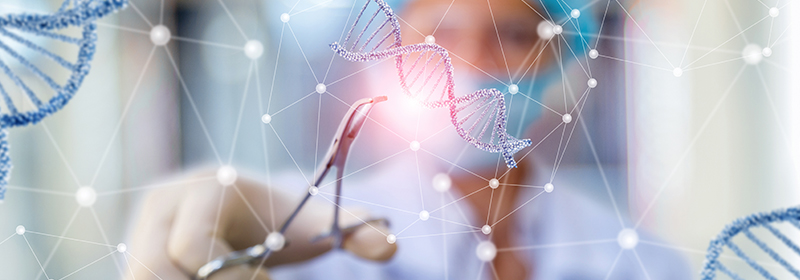Department Introduction
Medical Genetics | Our Speciality
:::
Our Speciality
Cellular Genetics Laboratory
At the beginning of the founding of the Cellular Genetics Laboratory in 1999, Dr. Ming-chung Yu, the responsible person for the Amniotic Fluid Laboratory in New York, US, was brought in for planning and reorganization, with the aim of turning the laboratory into the best one in the nation. The laboratory purchased two sets of computerized chromosome image analysis systems to speed up the analysis and reporting process, resulting in successfully improving the accuracy of laboratory quality control and reporting while significantly shortening reporting time, in an effort to assuage the family's anxiety during waiting and accelerate the doctors’ diagnosis.
In January 2003, the department brought in Professor Chi-chiang Lin, head of the Cellular Genetics Laboratory at the University of Alberta Hospital, Canada, as the laboratory chief. Under Professor Lin's leadership, the department's volume of business for prenatal amniotic fluid examination has risen from about 1,000 specimens a year to over 2,200. Furthermore, it has passed the accreditation by the College of American Pathologists (CAP) every year since 2003, and become the leading cellular genetic laboratory in the nation.
The laboratory is the cytogenetics laboratory approved by the Department of Health of the Executive Yuan. It can provide the most professional and fastest chromosome screening service for prenatal chromosome analysis.

Biochemical genetics laboratory
In order to make rapid and correct diagnosis of congenital amino acid metabolic diseases, the hospital spared no expense to purchase tandem mass spectrometers (LC/MS/MS). The tandem mass spectrometer has been widely applied to the analysis of the human body, environment, medicine, food, poison, and other compounds, and advanced countries in European and US have been using it in the examination of neonatal metabolic diseases for years. For the benefit of domestic newborns, the department’s Professor Jer-yuarn Wu and assistant research fellow Wei-de Lin in 2000 went to Duke University, US, for visit and study. After returning home, they built the screening criteria for newborn babies in Taiwan. Thus, the department is the first domestic medical unit with tandem mass spectrometry used in screening for newborn babies. With a view to promoting the health of Taiwanese people, the department has been studying the methods of rapid and accurate analysis of various metabolic diseases using the tandem mass spectrometer, hoping to minimize the harm caused by metabolic abnormalities.
Tandem mass spectrometry of blood samples (amino acid and acylcarnitine analysis) and qualitative analysis of urine amino acid (GC/MS) can be used to test congenital amino acid metabolic disorders, drug metabolism assessment, and fatty acid analysis and research.
Abnormal amino acid metabolism is a rare disease, including: 1) hyperphenylalaninemia—or called phenylketonuria—which is an autosomal recessive disorder and a congenital metabolic disease caused by the fault in the metabolic pathway where phenylalanine (Phe) is hydroxylated into tyrosine in vivo; 2) omithine transcarbamylase deficiency, the lack of which leads to a decline in the ability to remove ammonia and causes hyperammonemia.
Human genetics laboratory
Since its establishment, the laboratory has been devoted to the use of molecular biology to analyze various genetic diseases of Taiwanese people, including Wilson disease, oculocutaneous albinism, mucoploysaccharidosis, glycogen storage disease, Gaucher disease, Duchenne muscular dystrophy, fibroblast growth factor receptor gene, and other genetic diseases, such as achondroplasia, hypochondroplasia, thanatophoric dysplasia, and the genetic syndromes that causes early healing of the skull, including Apert syndrome, Crouzon syndrome, Antley-Bixler syndrome, Muenke syndrome, Beare-Stevenson syndrome. The laboratory has found more than 60 new mutational sites, thus providing complete local mutation data on Taiwan genetic diseases and presenting the best evidence for clinical diagnosis, as well as published more than 100 papers on prestigious journals at home and abroad.
Paternity testing laboratory
Half of the DNA of each individual is from father and half from mother. The analysis and comparison of the similarities between two people in the generic map can be used as an important basis for whether there is parent-child relationship or for identity verification. During the test, the subjects’ blood, skin sections, and so on should be collected. The correlation between the genes of two persons is examined by means of the characteristics of 16 loci of DNA, with the accuracy of the testing over 99 percent.
▲
